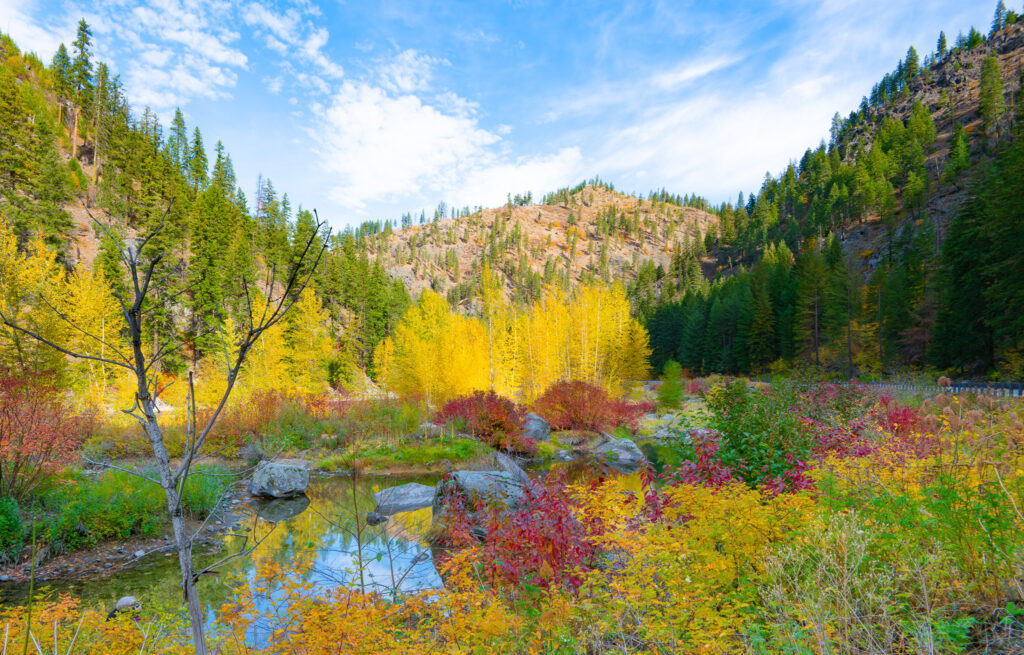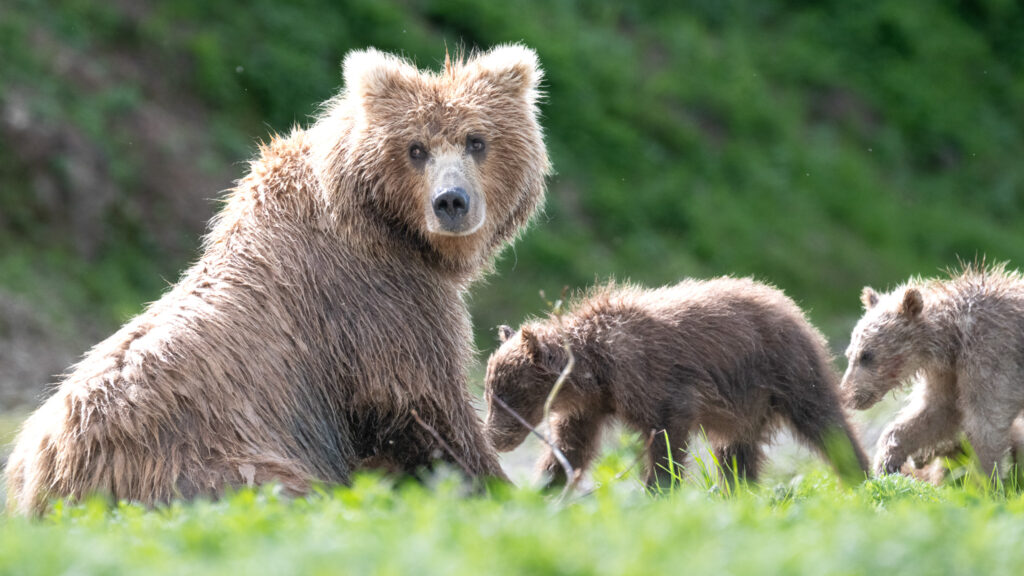Typically grizzlies are solitary animals, even while fishing alongside each other amongst all the salmon! That is what makes these two male grizzlies a rare site. These siblings are about 5 years old based on info I’ve learned from the Katmai National Park Rangers. The rangers believe these two lost their mother when they were mature enough to take care of themselves, probably around 2 years old. So … they have stuck together now for about 3 years and when they aren’t fishing for salmon or sleeping, they are play fighting! They never actually bite one another seriously, which is pretty unusual.
I first saw these two while I was photographing another male grizzly fishing in the river. While I was checking my shot, I saw these two guys in the background of the frame. While I waited for them to pop up again, they came into the river, not to fish but to play more! They kept play fighting as they crossed the river and disappeared into the brush.
In these images, I sat with these guys for about 2 hours while they played! I even took a break from photography to eat my lunch with my guide. We had them all to ourselves until a plane landed on the tundra nearby with tourists!
In August 2024, I was able get back to Katmai and to see the brothers again. This time they were in the (near, lookup on map) river play fighting and having fun. I have never actually seen them fishing, but they seem to be gaining weight, so I suppose they find the time, lol.
I asked the rangers how long they think they will stay together as they have become one of the many stories or legends regarding the grizzlies of Katmai. They looked at me and said “when one of them hits the other too hard and the play gets out of hand or … they might simply just split up one day. I hope to find out if they are still together next time I’m back in 2025!
Here are some of the known reasons grizzlies will fight with each other …
During mating season, this is fiercer fighting
Territorial fighting
Young adolescents will sometimes play fight when there is an abundance of food such the salmon in Katmai. But they always go their separate ways after.
Solitary
Grizzly bears are generally solitary animals, each maintaining its own home range, which may overlap with those of other bears. While they are territorial, they do not aggressively defend their ranges, allowing for occasional interactions with other bears. Despite their solitary nature, they navigate their environments independently, relying on their keen senses and adaptability to thrive in diverse habitats.
Social
Grizzlies can be social in certain situations, such as gathering at abundant food sources like salmon streams or berry patches. They also come together during the mating season, interacting more frequently. To communicate, grizzlies use a combination of facial expressions, vocalizations, scents, and body posture, helping them establish dominance, express curiosity, or avoid conflict when encountering other bears.
Exceptions
Mothers and their cubs stay together for several years, with the mother providing protection and teaching essential survival skills. Additionally, grizzly bears may gather during the mating season, temporarily forming pairs as they seek mates. These exceptions highlight the balance between independence and social interaction in a grizzly bear’s life.
Communication
Grizzly bears use a variety of methods to communicate with one another, including facial expressions, vocalizations, scents, and body posture. They may also rub their backs against trees, leaving behind scent marks that convey important information about their condition, dominance, and genetic makeup. This form of communication helps bears establish their presence in an area, avoid conflicts, and attract potential mates.



